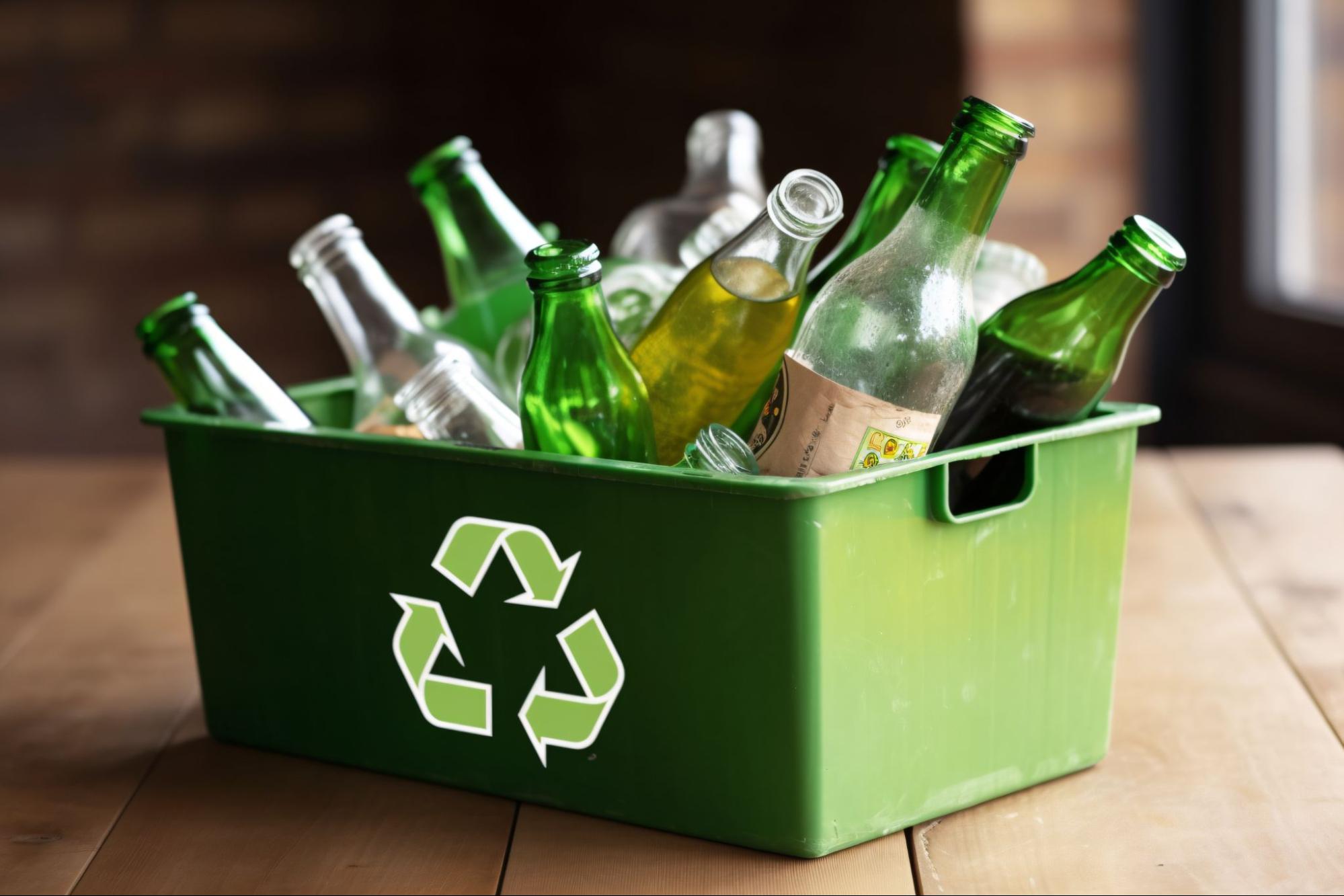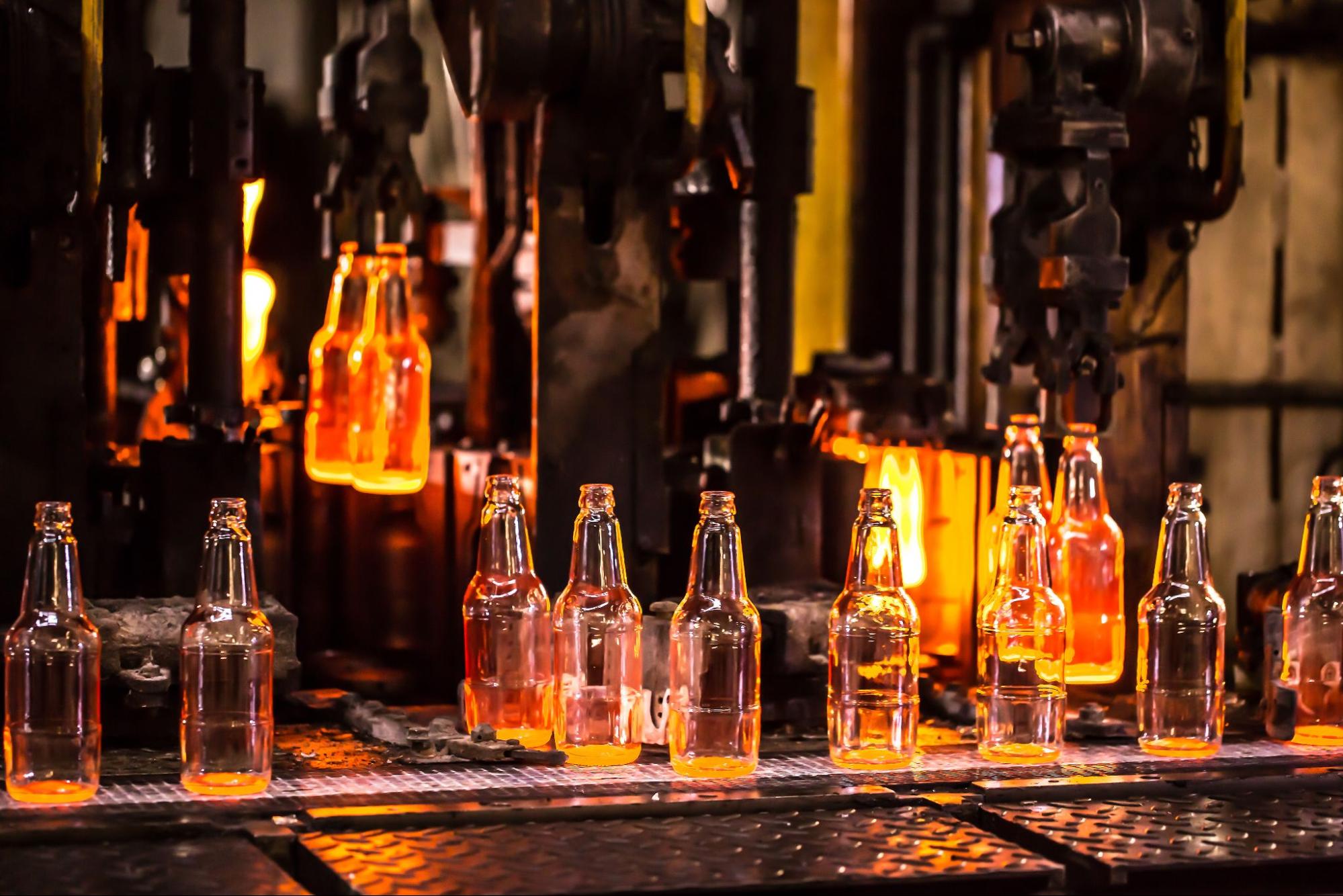- Wine Color/Type
- Top Occasions
- Unique Wines
- Surprise Me!
Recycling Glass Bottles - America Recycles Day
As we approach “America Recycles Day” on November 15, it's the perfect time for wine enthusiasts to reflect on the environmental impact of our glass bottles. It's a little-known fact that up to 60% of a wine's carbon footprint can be attributed to the bottle itself—a figure that can skyrocket to over 80% when we're talking about those extra heavy glass containers. But with knowledge comes the power to make change, and what better occasion than now to discuss the simple, yet vital act of recycling wine containers?
Only a fraction of glass bottles is truly recycled in the US. (Photo: vachom/stock.adobe.com)
Up to 60% of a wine's carbon footprint comes from the bottle manufacturing. In super-heavy glass bottles, the footprint can even exceed 80%, illustrating the importance of recycling wine bottles. According to Recycle Nation, only 28% of American glass was recycled in 2014. Today, that number is estimated to be only a little higher. This includes jars, beverages, jams, and peanut butter containers. It's unfortunate, as recycled glass is of virgin quality and could be recycled indefinitely.
The Recycling Process Explained
Your journey in eco-friendly wine enjoyment begins at the recycling bin. If your local community accepts glass curbside or at recycling centers, it's time to play a little color match with your bottles—separating them into white, brown, and clear categories. This color coding is essential; it preserves the pristine quality of the lighter glass and ensures it doesn't get darkened by other hues.
At the recycling facility, these bottles undergo a transformation — they're crushed into cullets, small glass fragments, before being mixed with raw materials like limestone and sand. The furnace roars to life at a blistering 2600°F to 2800°F, depending on the glass type, melting everything down to a liquid state from which new bottles are born.
Standard bottle shapes like Bordeaux or Burgundy are commonplace, but for wineries seeking to brand their bottles with beautiful emblems or unique designs, custom molds are created, often at a higher production - and environmental - cost. This is then passed on to the final wine drinker.
Producing glass is very energy and carbon intensive. (Credit: Vera/stock.adobe.com)
The rule of thumb goes like this: Recycling six tons of glass prevents one ton of carbon from being released into the atmosphere. If we use a mathematical equation and assume each wine bottle weighs exactly 500 grams, you would need about 12,000 bottles, or half a truckload, to save one tonne of carbon. Wines produced in high quantities can have the largest impact, rather than each of us aiming to hit that one-ton mark individually. However, it's the collective effort that counts toward reaching the one-ton milestone, not just our individual contributions. With an annual consumption of about 2.8 gallons per person, it would take nearly four years for the average drinker to reach that target, assuming each bottle recycled contributes to the goal.
The Power of Reuse
Innovative programs are now turning the tide from recycling to reusing. For example, Oregon's Revino is pioneering with lightweight, refillable Burgundy-format bottles, which are making the rounds through participating wineries. By their third cycle, these bottles reach a break-even point in carbon emissions when compared to their single-use counterparts.
Much like opting for a refillable cup at your local cafe, using refillable wine bottles significantly diminishes the carbon footprint. After consumption, these bottles embark on a journey back to cleansing centers where less energy is consumed to clean and sterilize them compared to creating new bottles. They're inspected for imperfections, then repackaged and shipped out, ready for another round.
Revino's vision is remarkable; they claim their bottles can be reused up to 50 times, potentially reducing carbon emissions by a staggering 85%. And with over 30 wineries poised to adopt this sustainable practice from 2024, we're looking at a greener, more sustainable future for the wine industry.
History of Recycling
In the late 19th and early 20th centuries, food and beverages were exclusively packed in refillable packaging. With the introduction of mechanization, the beverage industry began to expand. After the Second World War, lighter glass and aluminum cans were introduced. The first ban on non-reusable bottles was passed in Vermont but was repealed shortly thereafter. Thus, the no-return bottle began to emerge as the new standard.
By 1970, only 26% of bottling was done with refillable bottles, signaling a significant shift from the past. Oregon implemented a 5-cent deposit per bottle to encourage recycling. The market for reusable formats experienced a sharp decline, with less than 2% of wine bottles in the U.S. being refillable
In 2008, approximately 4.8 billion glass bottles and containers were consumed annually.
Today, refillable solutions are recognized as essential for the future. This is not a matter of new technology but rather common sense.
A Greener Tomorrow
This America Recycles Day, let's commit to recycling our bottles for sustainability and the health of our planet. Every action we take can help preserve the Earth for future generations of wine enthusiasts. So, as you savor your next glass of wine, take a moment to consider the journey of the bottle in your hand—and how you can make that journey as environmentally friendly as possible. Cheers to a greener future!
Peter Douglas
Latest articles


